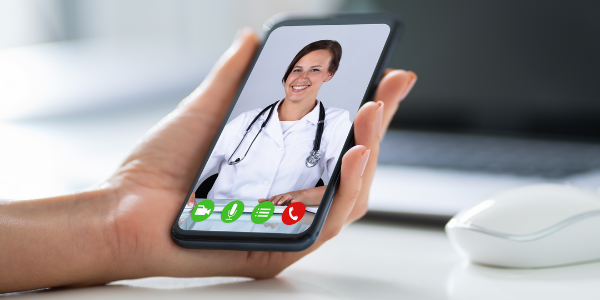
Since the onset of COVID-19, health care systems have been inundated with trying to control the novel coronavirus and simultaneously create access points for patients to receive the care they need and deserve. While life post-COVID may look different than we imagined, there are a few things we might keep from the pandemic era—like telemedicine.
Jennifer M. Naticchia, M.D., a family medicine doctor at Inspira Medical Group Primary Care Somerdale, details the advantages of telehealth and offers tips on how to bridge the gap between patients and the health care they need during this time of isolation.
1. Allow Your Mindset to Shift from “Patient-Centered” to “Relationship-Centered”
Early in Dr. Naticchia’s career, she learned the value house visits bring: insight into a patient’s medical, social and personal needs that a sterile office visit would never provide.
“When you go into someone’s home, you might see the pictures of family on the mantle of a fireplace or on the walls. But really, those pictures are portals into their lives and the people they are. Now, telemedicine affords us the opportunity to see our patients as more than patients, but as people,” said Dr. Naticchia. “Recently, a patient came to me in need of pain management assistance. While she went to grab her medicine, I was able to connect with her mother who was in the room. I learned that not only does my patient take care of her mother full-time, but this stress led to my patient’s condition. This was information I never would have known if it weren’t for telemedicine and my ability to converse with both parties.”
2. Replace Your “Pre-COVID Door Knock” with a Virtual Wave
For Dr. Naticchia, every virtual appointment starts with two steps: a wave hello and a thank you.
“At the start of every call or telehealth video meeting, I greet every person with a wave and thank them for connecting with me virtually. Especially for patients who are leery of virtual health and not tech-savvy, thanking them goes a long way,” said Dr. Naticchia. “The next thing I do is inform them that if we happen to lose connection we will continue the appointment via phone call. It’s important to let patients know that just because they aren’t in the office doesn’t mean they won’t get the same high-quality care.”
3. Ask the Difficult Questions
As vaccines, working from home, and daily COVID-19 stress continues to build, Dr. Naticchia urges providers to integrate mental health screening and prompting into every patient’s appointment.
“After our introductions, one of my very next questions is: How are you doing? By leaving it open-ended, we, as the providers, are prompting our patients to give genuine, authentic responses,” said Dr. Naticchia. “While this question may work itself into the conversation naturally, it’s critical that you talk to your patients about how they are feeling. Our patients are experiencing furloughs, losing their jobs, remaining isolated in their homes and are losing coworkers, neighbors and family members to COVID-19. This pandemic has caused many additional stressors to our patients, and it is our responsibility to check on and help guide them if possible.”
4. Use a Supportive Listening and Counseling Approach
For many patients, more concerning than having limited access to health care professionals during COVID-19 is feeling like they must do it all alone; however, if you notice your patient is beginning to feel emotional, Dr. Naticchia offers her “divide and conquer” approach.
“Inspira is home to a plethora of primary care providers who are on the front lines to care for patients. They, in turn, can easily and quickly connect patients with Inspira specialists, case managers and counselors—not to mention connect patients with Inspira’s telemedicine resources that allow for same-day access to care. Whatever your patient is going through, reiterate to them that they do not have to go through it alone,” said Dr. Naticchia. “If you have a patient who feels lost on their health management plan, try saying, ‘If you can take the lead on setting up the next appointment, I will work on getting your lab results to their office and ensure they are delivered before you arrive.’ This not only takes responsibility away from your patient but makes them feel like you are there for them.”
For more information about Inspira’s telemedicine efforts, go to www.inspirahealthnetwork.org

